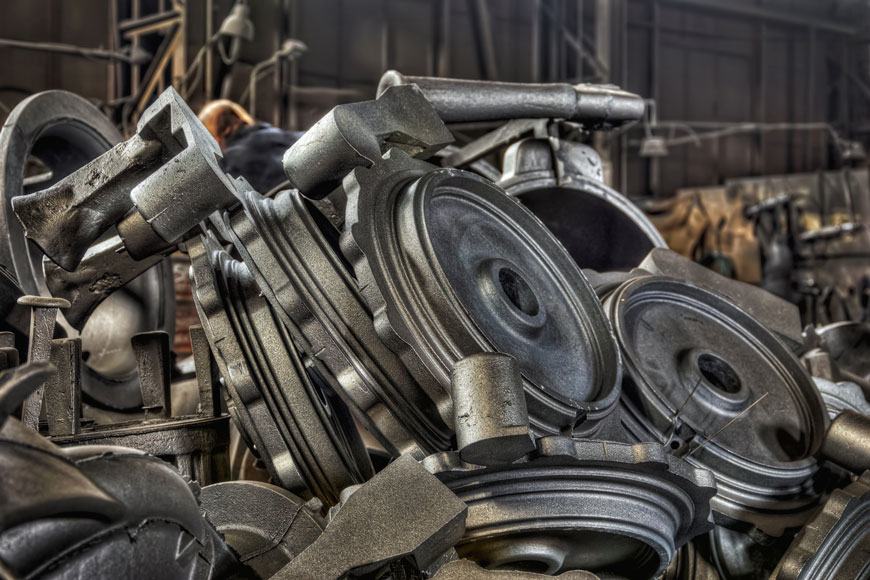1. Material selection and quality
Raw materials: The main production materials of cast iron are pig iron and recycled materials. Pig iron is usually obtained by smelting in a blast furnace, while recycled materials mainly come from the pouring system and scrap iron parts. The quality of these raw materials directly affects the final quality of cast iron parts.
Alloy elements: In order to improve the mechanical properties or physical and chemical properties of cast iron, a certain amount of alloy elements is sometimes required to be added.
2. Casting process
Smelting: Pig iron and scrap iron blocks are put into a blast furnace for smelting, and the molten iron flows into the ladle and alloys are adjusted. This link requires strict control of the ratio of alloy elements to ensure the stability of the quality of cast iron.
Pouring: Pour the adjusted alloy iron liquid into the pre-made casting mold. During the pouring process, the pouring method and pouring speed should be determined according to the shape and size of the cast iron parts to prevent defects. At the same time, uniform pouring should be carried out to avoid turbulence and slag floating of the iron liquid.
Cooling: Cast iron parts cool naturally or with water to solidify. Cooling temperature and time must be controlled. This ensures physical properties and appearance quality.
3. Post-processing and processing
Post-processing: After casting, the castings need to be post-processed, including removing the gates and risers, cleaning the surface impurities, and performing heat treatment. These steps can improve the strength and precision of the castings.
Processing and inspection: Cast iron parts undergo processes such as cutting, milling, drilling, and grinding. Quality inspection is then performed. The inspection covers appearance and functional quality. Appearance quality includes surface roughness, defects, and dimensional deviations. Functional quality includes wear resistance, corrosion resistance, and resistance to thermal shock.
4. Quality control and inspection
Formulate process rules and technical conditions: Each process is strictly controlled and inspected according to the process rules and technical conditions.
Finished product inspection: Equipped with reasonable testing methods and suitable testing personnel, the finished castings are inspected for quality. Commonly used detection methods include comparing samples to determine surface roughness, coloring or magnetic powder method to check surface fine cracks, etc.
5. Casting method and production conditions
Casting method selection: The casting method should be chosen based on material, weight, surface finish, and cost. Common methods include sand casting. Sand casting includes clay sand molds, resin self-hardening molds, etc. Special methods include metal mold casting and investment casting.
Adaptability to production conditions: The choice of casting method should also be adapted to the production batch. For example, factories with large-scale production should create conditions to adopt technologically advanced modeling and core making methods to improve production efficiency and product quality.
In summary, the manufacturing process of cast iron is a comprehensive concept involving material selection, casting process, post-processing and processing, quality control and inspection, casting methods and production conditions. Only by strictly controlling these links can the high quality and high precision of cast iron parts be ensured.

